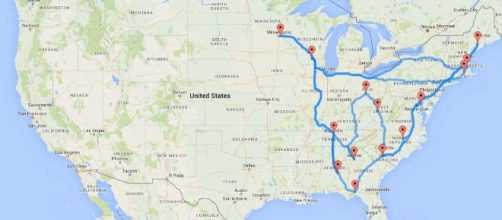This past #MemorialDay, nearly 40 million Americans went on the road to travel more than 50 miles from home, and 34.6 million motorists drove to their destinations (as opposed to flying or taking a cruise), according to AAA. So what is it about the unofficial start of summer that gets people to pack their bags and hit the nation's freeways? For most people, common motivations include the desire to enjoy the sunny outdoors, take the family on vacation, and visit a popular destination. Despite gasoline prices rising by at least 11 cents compared to last year, 75 percent of Americans plan to take a #RoadTrip later this year.
A recent survey shows that Americans have clear preferences when they Hit The Road. For instance, instead of riding with the top down, most people would rather ride in a big, comfortable vehicle. Only 3.8 percent of respondents prefer a sports car, while 44.6 percent of those surveyed say they would rather ride in an SUV on a Road Trip, according to the 2017 Road Trip Survey by GM BuyPower Card.
Hotels are the biggest expense
Motorists shouldn't let fun driving get in the way of proper planning, either. Expenses can rise beyond what's budgeted for their #SummerJourney. There's paying for food and water, gas, and entrance fees at attractions, along with other unforeseen costs. The same survey finds that Americans like to visit national parks (25.1 percent) while a smaller number (19.7 percent) say they'd rather go cross-country.
Beaches and lakes (18.2 percent) came in third as Americans' go-to destination.
Overall, 40.4 percent of Americans spent over $500 on their last road trip, and nearly half (49.3 percent) of respondents said they consider hotels their biggest expense. That means #SummerTravelers may want to look into mobile apps, retail deals and other card rewards programs that offer discounts on hotel stays, car rentals, and fuel prices at the pump.
Always prepare for your road trip
There are ways to enhance safety and save money when you hit the road for days at a time. Consider that you might find yourself stuck in the middle of nowhere if your car engine goes kaput. With the worst-case scenario in mind, it's a good idea to bring emergency cash in case you can't find an ATM.
Moreover, if you regularly use plastic to charge away your road tripping expenses, like 47.6% of Americans, consider a card with travel-related rewards. For example, earnings from the GM BuyPower Card can go toward the purchase or lease of a new GM vehicle. If you're going to swipe, you can use the card to get 5 percent earnings on the first $5,000 in purchases every year and 2 percent unlimited earnings on purchases after that.
It's not always about cost; it's also about reducing your travel risks. Bringing a spare key is a good idea, as over four million drivers get locked out of their vehicles each year, according to AAA. A spare key saves you the frustration, time and money of waiting for a locksmith, especially if you're stuck in the middle of nowhere.
Pack your snacks
Food is one of the make or break aspects of a road trip, so you can't afford to go wrong when packing your snacks. Chips (30.8 percent) as well as fruits and veggies (17.7 percent) are the most popular snacks for an American road trip, according to the same survey. Consider bringing healthy edibles such as fruit, cereal bars, and bottled water that will keep you alert when driving or riding. Preparation and planning are key when traveling on an interstate. You can enjoy your long drive knowing that you've covered all your bases.


